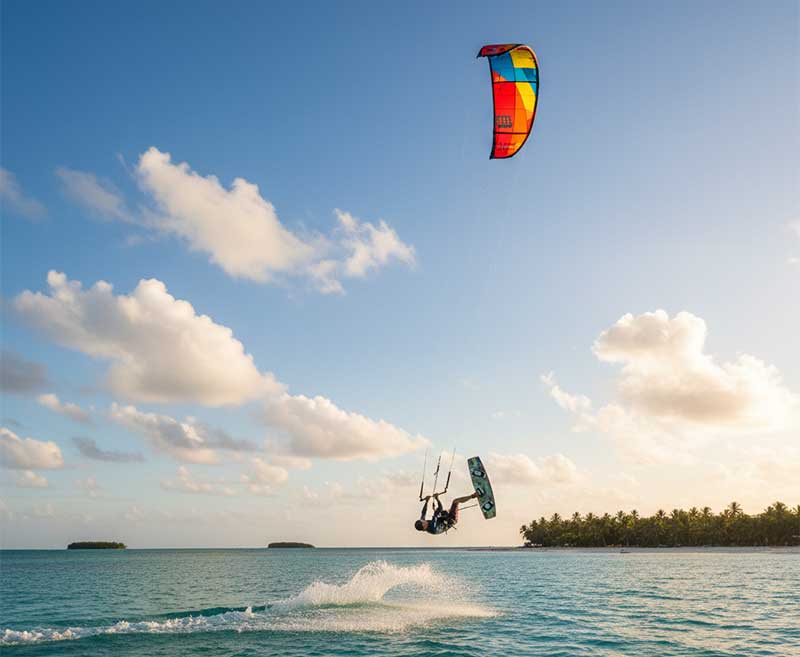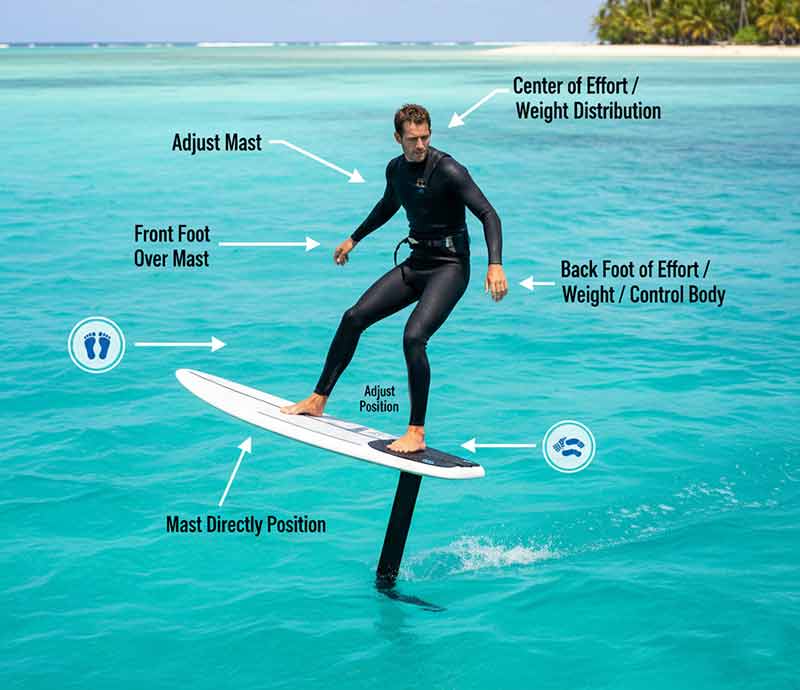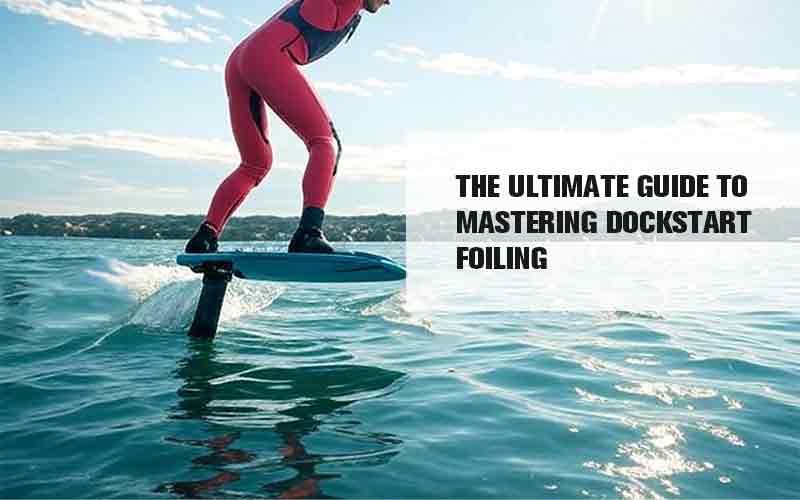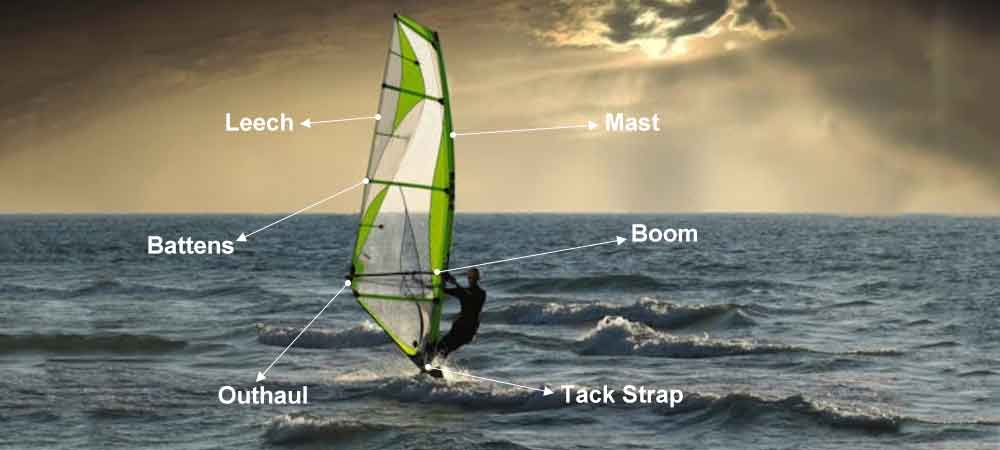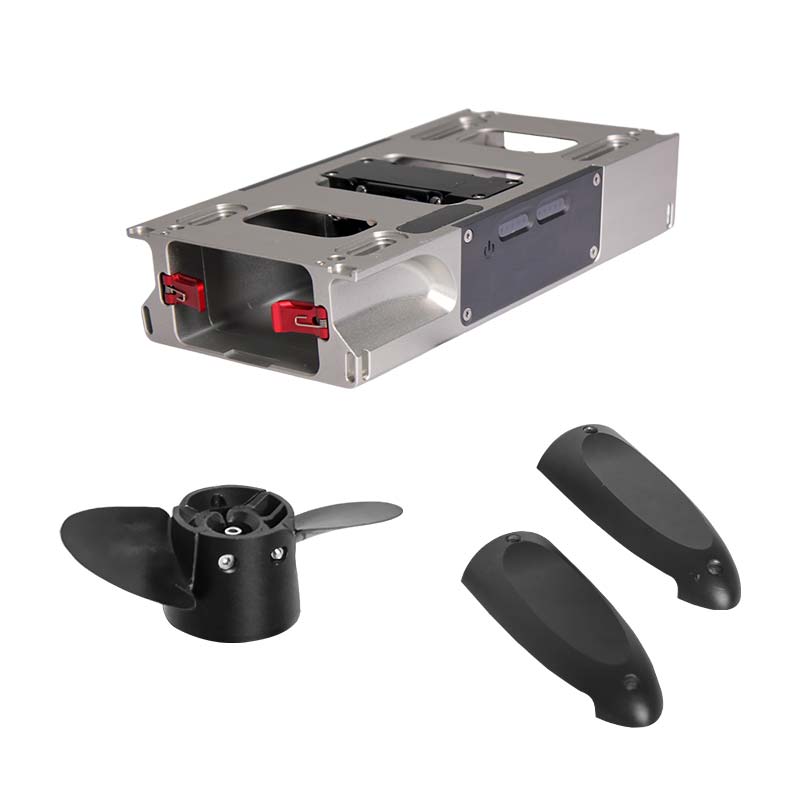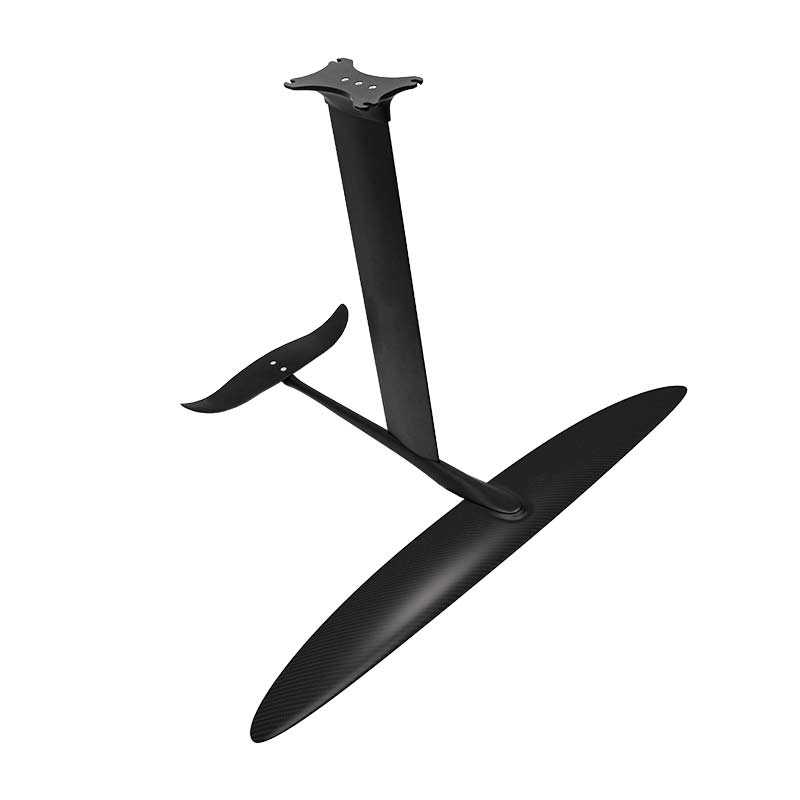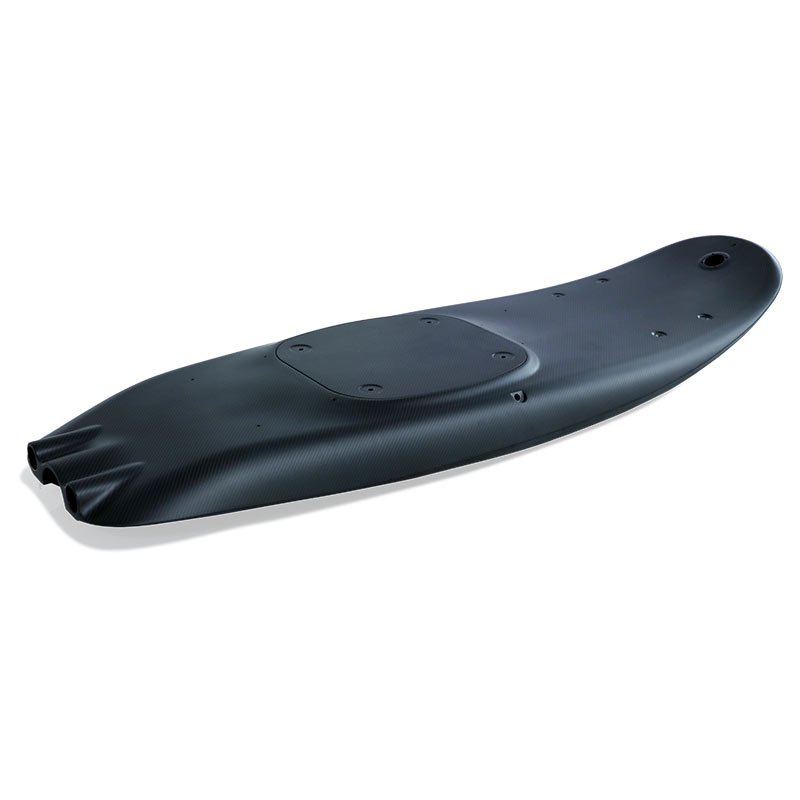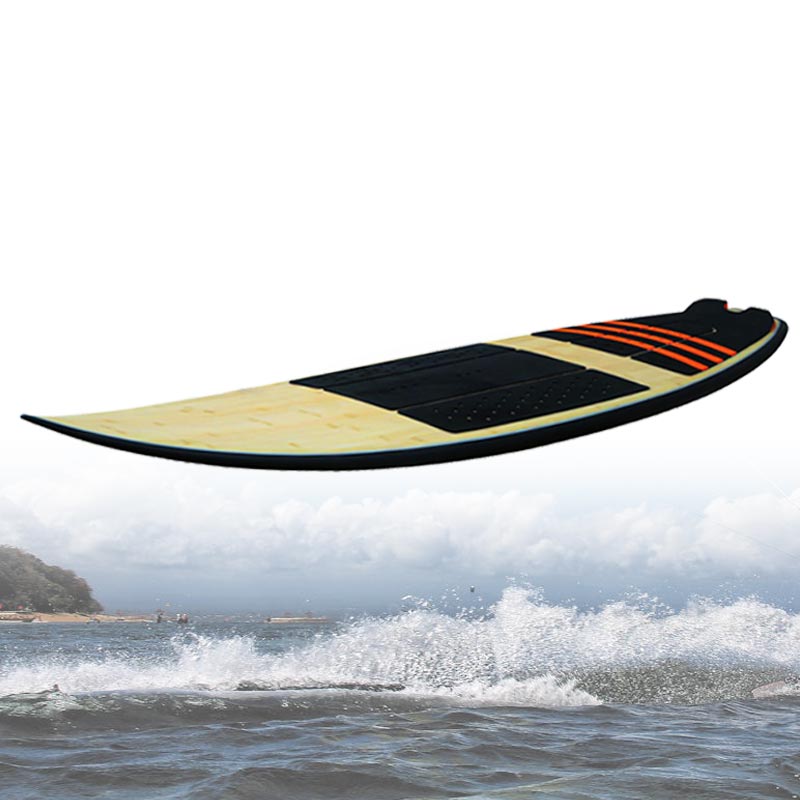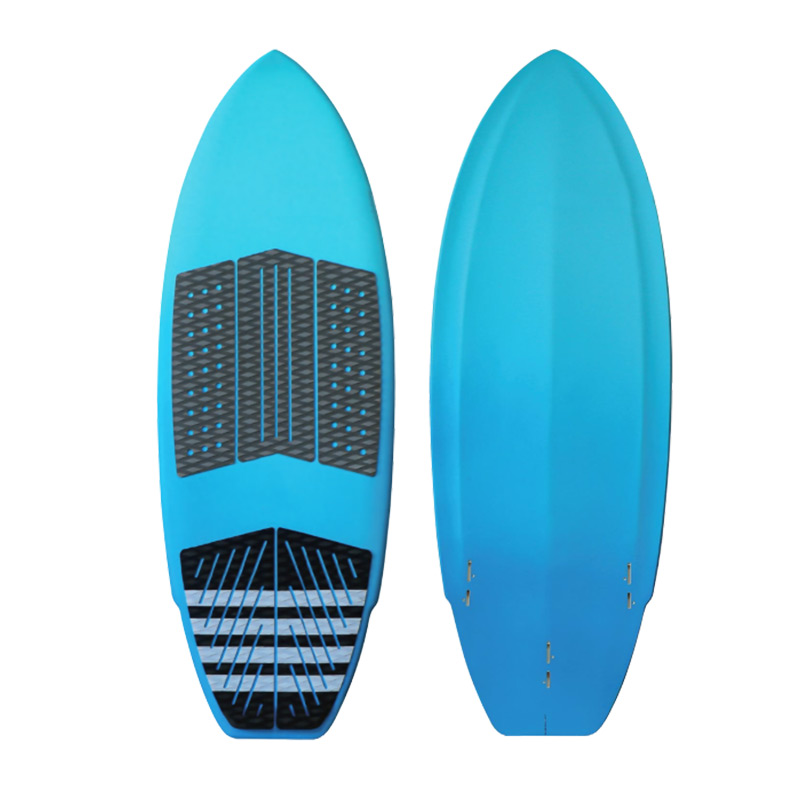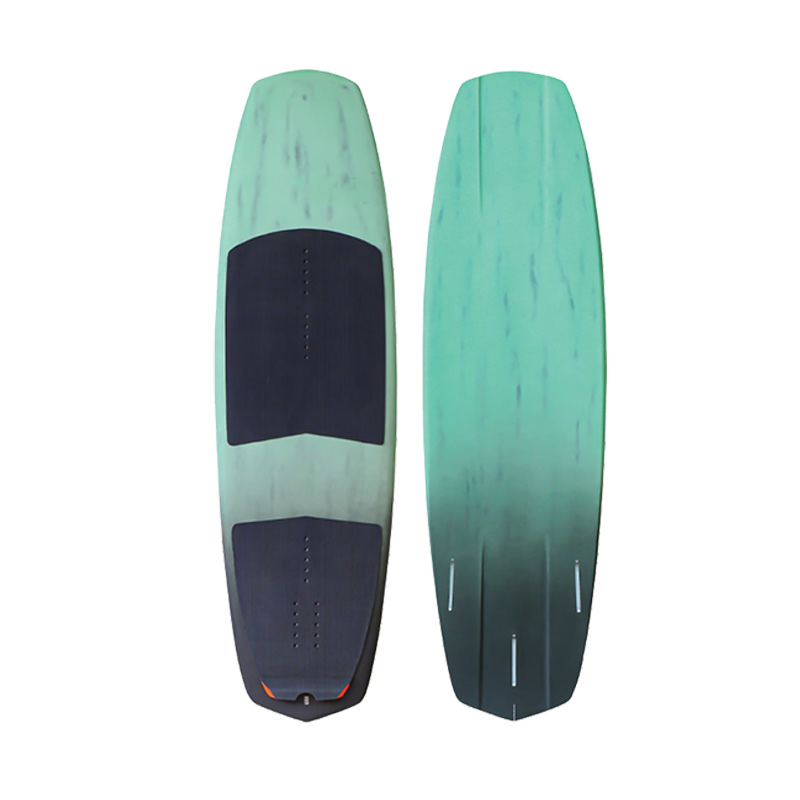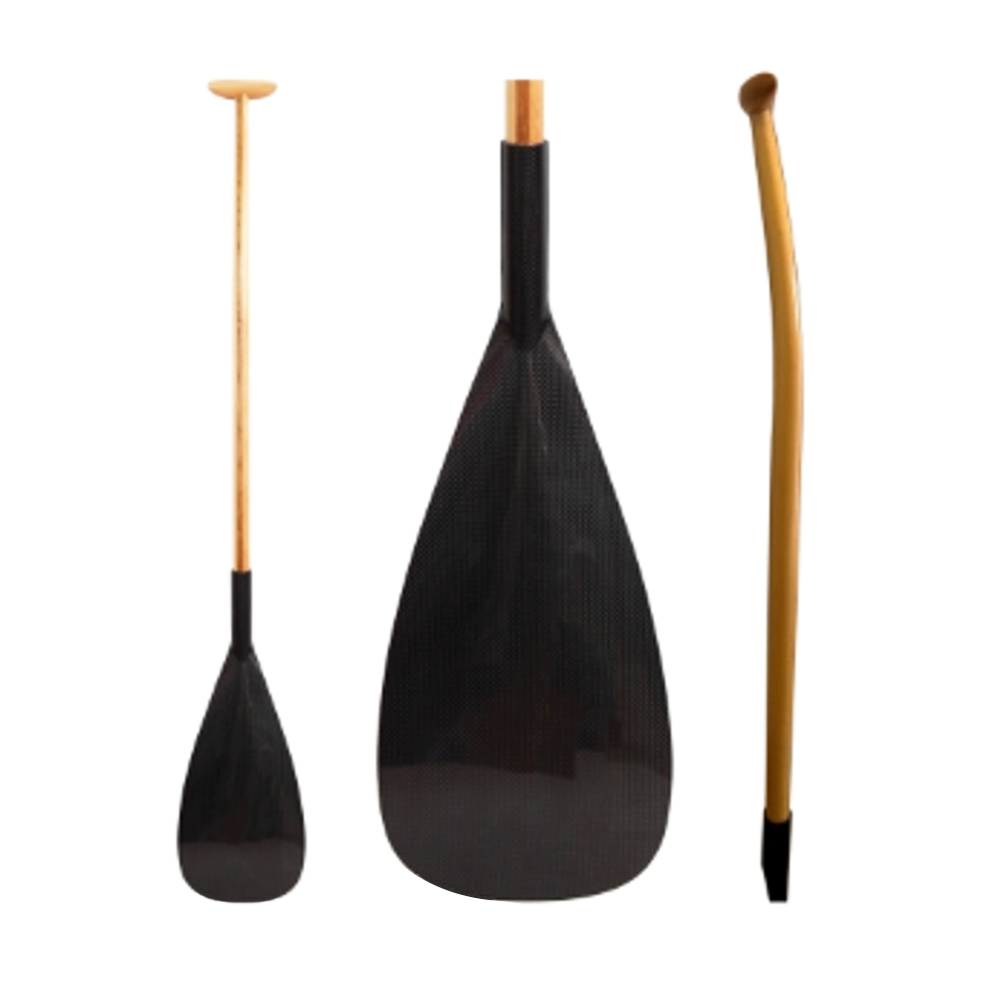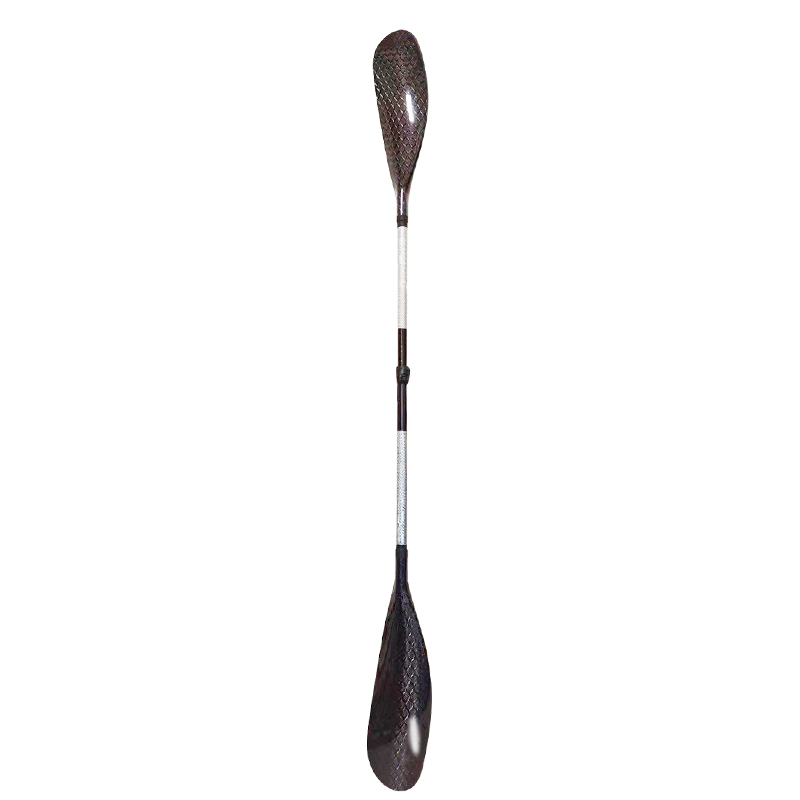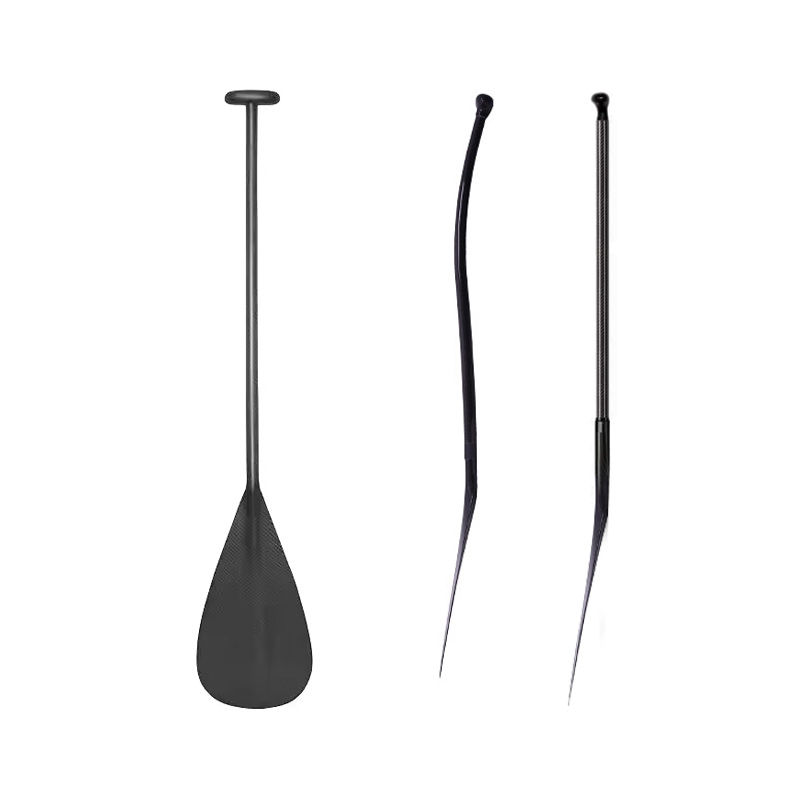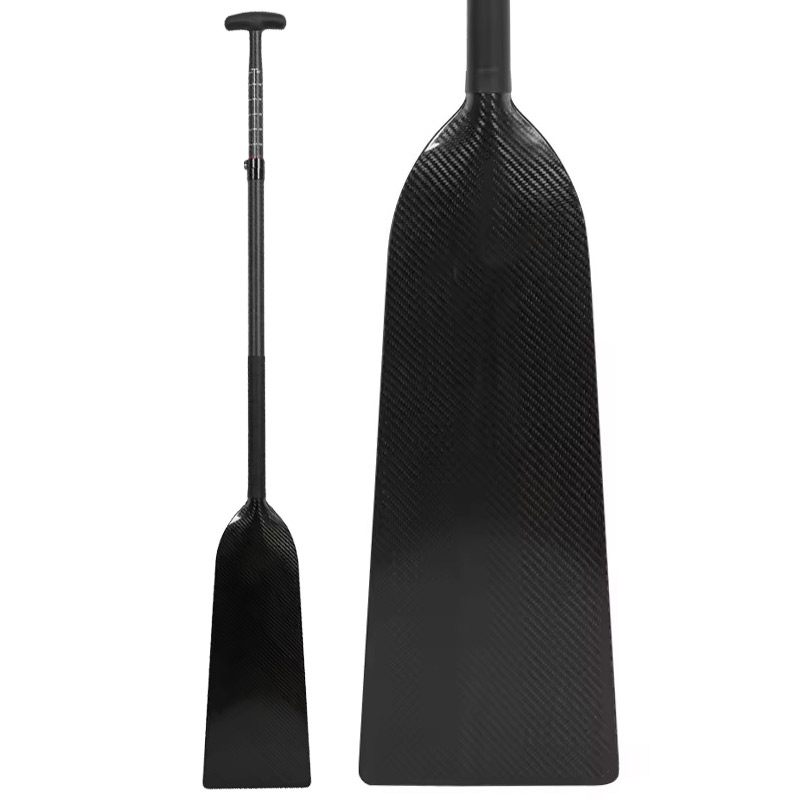What is rafting sport?
Rafting sport embodies the exhilarating pursuit of navigating rivers and waterways using inflatable rafts. This dynamic activity ranges from serene flatwater journeys to adrenaline-pumping whitewater challenges, catering to adventurers of all skill levels. Participants rely on teamwork and precise communication to maneuver through turbulent rapids, fostering a profound connection with nature. Essential equipment, including life jackets and paddles, ensures safety while enhancing the thrill of the experience. As enthusiasts traverse diverse ecosystems, the rafting sport cultivates not only a sense of adventure but also an appreciation for environmental stewardship, making each excursion a unique blend of excitement and ecological awareness.
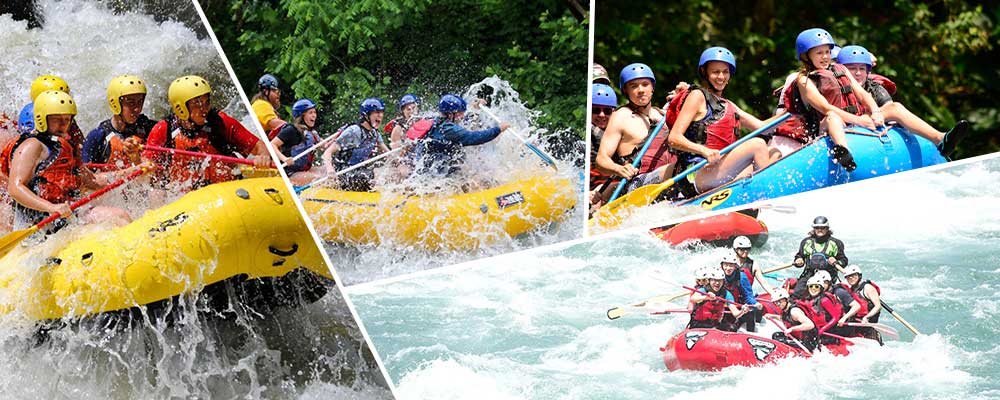
The Origins of Rafting
Rafting sport originally stems from the skin boats of the Eskimos, the bark canoes of Native Americans, and bamboo rafts and wooden rafts from China, all created to meet the needs of life, survival, transportation, and warfare. However, the widespread rafting movement only began to develop after World War II. Some retired inflatable rubber boats were discovered by outdoor enthusiasts who started purchasing them for recreational use. With the post-war economic recovery, the outdoor activity market gradually expanded, prompting these enthusiasts to improve the specifications of rubber boats, refine various equipment, enhance their skills, and operate commercial rafting tourism, thus becoming the first generation of commercial rafting operators in the United States.
The raftingsport gradually evolved into a highly participatory recreational tourism activity and a competitive sport with significant challenges. In the 1970s and 1980s, the development of commercial rafting became increasingly refined, and related industries, such as specialized boating equipment, gear, and clothing, experienced substantial growth. Government regulatory agencies also established management regulations regarding commercial rafting to ensure the safety, environmental protection, and standardization of rafting activities.
In summary, the origin of rafting sport is diverse; it initially arose from the needs of life and survival, gradually evolving into a recreational and competitive activity. For more information about the origins of rafting, it is advisable to consult relevant historical literature or seek advice from outdoor sports experts.
The Evolution of Rafting
After World War II, some retired inflatable rubber boats were discovered by outdoor enthusiasts who began buying them for fun. Later, as the post-war economy recovered, outdoor activities gained a larger market, prompting these individuals to improve the specifications of the rubber boats, refine various equipment, continuously enhance their skills, and operate commercial rafting tourism, becoming the first generation of commercial rafting operators in the United States.
In the 1970s and 1980s, the development of commercial rafting became increasingly sophisticated, and related industries, such as specialized boating equipment, gear, and clothing, also flourished. Government regulatory bodies established management regulations for commercial rafting, covering operator licensing, river management, paddle qualification, safety measures, environmental protection, and the classification of rafting sport difficulty levels.
Benefits of rafting sport
- Physical Fitness: Rafting is an excellent workout. Paddling engages multiple muscle groups, improving strength, endurance, and cardiovascular health.
- Teamwork and Communication: It fosters collaboration among participants. Effective communication and coordination are essential for navigating challenging waters, enhancing social bonds and teamwork skills.
- Stress Relief: Being immersed in nature and engaging in a thrilling activity helps alleviate stress and promotes mental well-being. The rhythmic sounds of water and stunning landscapes contribute to relaxation.
- Adventure and Challenge: Rafting sport provides an adrenaline rush, appealing to thrill-seekers. It encourages individuals to step out of their comfort zones and embrace new challenges.
- Connection with Nature: Rafting sport offers a unique way to experience diverse ecosystems. Participants can enjoy breathtaking scenery and wildlife, fostering a deeper appreciation for the environment.
- Skill Development: Participants learn valuable skills, such as navigation, risk assessment, and safety protocols, which can be beneficial in various outdoor activities.
- Enhanced Mood: The combination of physical activity, social interaction, and nature exposure can boost overall mood and increase feelings of happiness and fulfillment.
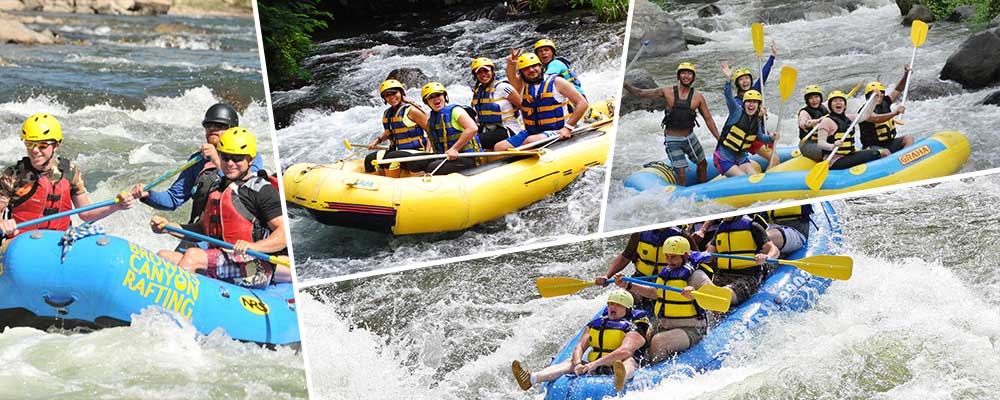
Whitewater and Flatwater
Water flow can be classified into two types: Whitewater—generally flowing water with waves, such as in the ocean, rivers, and waterfalls. Flatwater—refers to still or minimally flowing bodies of water, such as ponds, reservoirs, lakes, and marshes.
Rafting Equipment and Precautions
The type of rafting equipment can vary based on the river section. Generally, inflatable rafts are the most versatile and commonly used; small wooden boats are suitable for relatively straight river sections with fewer bends and rocks; bamboo rafts are best for calm waters.
Inflatable Rafts
Inflatable rafts are highly adaptable; even when encountering significant drops or steep canyons, they can usually navigate safely. Their flexible material and inflatable chambers allow them to handle rocks effectively. Typically, tourists don’t need to worry about steering, as a guide is responsible for direction and balance, managing any challenges posed by rapids and rocks. Inflatable rafts usually come equipped with several paddles for tourists to use; in calmer sections, tourists can paddle under the guide’s instruction.
Bamboo Rafts
Bamboo rafts (or bamboo poles) are generally not suitable for use in fast-flowing rapids, as they can easily become stuck or capsize. However, they are quite charming when floating on calm waters. Tourists can use bamboo poles to push off while enjoying the riverside scenery at a leisurely pace. Of course, this is not strictly rafting.
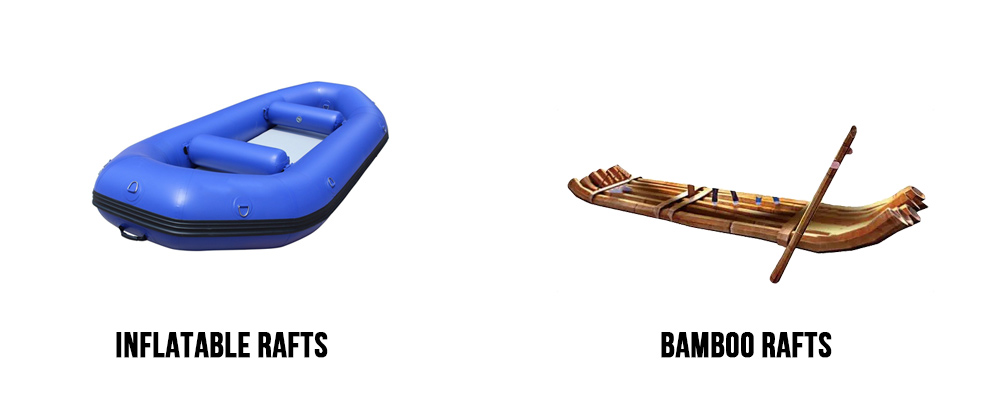
Other Equipments
- Paddles: Lightweight and sturdy, paddles help navigate the raft through rapids. They come in different shapes and sizes to suit various paddling styles and conditions. And Unity Sports is a composite manufacturer that can produce various rafting paddles for canoes and kayaks, if you are interested, welcome to contact us for more.
- Life Jackets (Personal Flotation Devices): A crucial safety item, life jackets keep participants buoyant in the water. They should be properly fitted and Coast Guard-approved.
- Helmets: Used in whitewater rafting sport, helmets protect against impacts from rocks and other hazards. They are typically made of lightweight materials for comfort.
- Dry Bags: These waterproof bags are essential for keeping personal belongings, clothing, and gear safe and dry while on the water.
- First-Aid Kits: A basic first-aid kit is vital for treating minor injuries and addressing emergencies that may arise during rafting sport trips.
- Safety Gear: Additional safety equipment, such as rescue ropes, throw bags, and flares, can be lifesaving in emergencies.
- Footwear: Appropriate footwear, such as water shoes or sandals with straps, provides grip and protection on slippery surfaces.
- Clothing: Quick-drying, moisture-wicking clothing is recommended, along with layers to accommodate changing weather conditions.

Common Rafting Precautions
- Rafting season is from April to October each year, with central regions typically having a shorter season than southern areas, varying with weather and hydrological conditions.
- It’s best to bring a clean change of clothes for after the trip and a pair of plastic sandals for use on the boat.
- Do not bring cash or valuables on the boat; in case of capsizing or other accidents, rafting companies and insurance will not compensate for lost cash or items. For self-guided trips, consider purchasing short-term travel accident insurance.
- Upon boarding, carefully read the rafting guidelines, follow staff instructions, wear life jackets, and locate safety ropes.
- In cooler weather, consider buying a raincoat at the rafting departure point.
- When navigating through rapids, follow staff commands, avoid sudden movements, hold onto safety ropes, keep your feet secured, and lean your body toward the center of the boat.
- If you capsize, remain calm; you are wearing a life jacket.
- Do not jump overboard to swim; if swimming is permitted, do so only in calm waters under the guide’s advice and do not stray far from the boat.
- Rafting sport is a challenging outdoor activity with certain risks, making it unsuitable for the elderly, weak, ill, disabled, or pregnant individuals to avoid safety accidents.
Classification of Rafting Levels
The American Whitewater Association classifies rafting into six levels:
- Class I: Areas with calm water.
- Class II: Most waters are calm with slight waves. Wave height: 1 meter.
- Class III: Frequent waves, but manageable for those with some experience. Wave height: 1.5–2 meters.
- Class IV: Difficult even for experienced individuals, with large obstacles to avoid. Wave height: 3 meters.
- Class V: Suitable only for those with extensive experience; life may be threatened by significant obstacles. Wave height: over 3 meters.
- Class VI: (Currently) unachievable.
Rafting Association
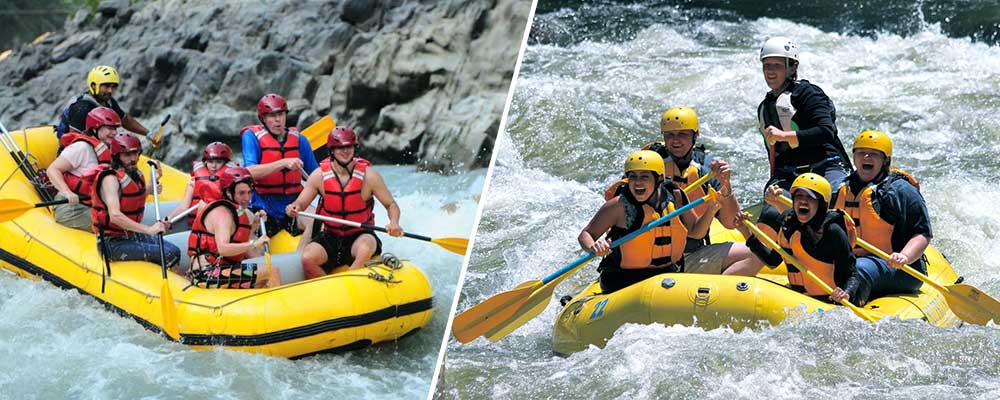
American Canoe Association (ACA)
When discussing rafting and kayaking, one cannot overlook the ACA, which stands for the American Canoe Association. Founded in 1880, it is one of the oldest and most authoritative organizations in the world for paddlesports. Its main goals include education, training, environmental protection, organization, and funding for competitions. ACA’s skill training and certification are recognized as the “gold standard” in the industry. The ACA sponsors over seven hundred events annually, offers safety education instructor certifications, river protection, and public information campaigns, with over four thousand certified ACA instructors and more than two hundred local paddling clubs, along with fifty thousand individual members.
International Rafting Federation (IRF)
The IRF promotes rafting sport as a competitive sport and recreational activity worldwide. It sets safety standards, organizes international competitions, and offers training programs for guides and instructors. The IRF is dedicated to developing rafting sport at all levels and enhancing the skills of participants globally.
British Canoeing
This organization governs all paddlesports in the UK, including rafting sport. British Canoeing focuses on promoting safety, skills development, and access to waterways. They offer coaching and leadership programs and advocate for environmental stewardship within the paddling community.
Rafting Australia
This national body oversees rafting sport in Australia. It promotes safety standards, provides training and certification for guides, and organizes events and competitions. Rafting Australia aims to support the growth of rafting as a safe and enjoyable outdoor activity.
New Zealand Rafting Association (NZRA)
The NZRA focuses on promoting rafting as a sport and recreational activity in New Zealand. It provides training, supports safety initiatives, and organizes competitions. The association is committed to environmental conservation and sustainable practices in the rafting community.
In conclusion
Rafting sport has evolved from its utilitarian origins to become a vibrant and challenging outdoor activity enjoyed by many. The growth of commercial rafting has not only enriched the recreational landscape but has also fostered teamwork, resilience, and a deeper appreciation for nature. As participants navigate the thrills of whitewater or the serenity of flatwater, they embrace both the adventure and the responsibility of environmental stewardship. Whether experienced or novice, rafters are encouraged to prioritize safety and preparation to fully enjoy the benefits of this exhilarating sport. For those seeking a unique way to connect with nature and enhance their outdoor skills, rafting sport offers an ultimate experience that promises lasting memories and newfound camaraderie.

